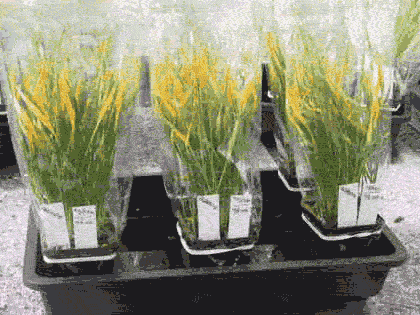Devastating USA strain of yellow rust could infect European wheat varieties

European wheat could be potentially at risk from a new strain of yellow rust that has caused large-scale yield losses across the major wheat belt in the USA, according to a leading researcher.
The strain survives at higher temperatures than current races, produces many more spores and is more aggressive in its attack, Mogens Hovmoller, from Denmark’s University of Aarhus, together with Eugene Milus from the University of Arkansas have discovered.
And with just one or two mutations it could easily infect European varieties, Dr Hovmoller says.
The story starts in the wheat belt of the USA. Prior to 2001 yellow rust was confined mainly to a few parts of the north-western states, such as Oregon, Washington and Idaho.
But from 2001 onwards yellow rust has struck the wheat belt that extends from North Dakota in the north to Texas in the south, and east into Kentucky and Alabama. It is now the most severe wheat disease in the region, according to Dr Hovmoller, with annual losses of 10m t/year.
The disease changed behaviour in North America, by extending into areas previously considered too hot, he explains. Temperatures of over 30C are common in some of the states, which would usually knock out yellow rust infections. But these infections spread quickly and did not stop when the temperature warmed up.
Analysis of the new strain compared with yellow rust spores collected in the 1980s and 1990s showed the new strain grew much faster on universally rust-susceptible wheat.
And when measurements were made of how fast a single inoculated spore grew at two different temperatures, researchers found the new strains grew faster at both temperature ranges, but the differences between old and new strains were much larger at the high temperature range (14-28C) as compared with the previously favourable temperatures (12-18C) for yellow rust.

A new strain of yellow rust from the USA could cause havoc in Europe, says Danish researcher Mogens Hovmoller (top).
The researchers also measured the number of spores produced by each lesion at both temperature ranges, and found, while more spores were produced at the lower temperature range for both old and new rust strains, the new strain was also able to produce enough spores at high temperatures to keep the rust epidemic going. “It was producing three to four times as many spores a day at higher temperatures than the old strain,” Dr Hovmoller says.
DNA analysis of the spores has confirmed the new race has a completely different origin to European rust.
Worryingly for European farmers, isolates with a very similar make up have been found in rust screens Dr Hovmoller set up in Denmark. These atypical races do not grow on most European varieties, but are able to on certain varieties used in the screen, he says.
It means this potentially new, more aggressive strain of yellow rust, could infect European varieties. At the moment they are protected by varietal resistance, but, as growers are only too aware, that is no guarantee. Dr Hovmoller suggests the new strain would only require maybe one, two or three mutations before it would be able to infect many new European varieties. “How long that will take I can’t say,” he says.
But research has found the rate of evolution for yellow rust to adapt to new cultivars is very fast. “It has a high mutation rate. That could be because the disease has no sexual stage, so it needs to mutate to continue to evolve,” he explains.
And the new strains ability to produce many more spores increases its chance of succeeding, he warns. “We definitely need resistance to this strain otherwise it will be a big problem.”
YELLOW RUST THREAT
|
|---|

To subscribe to Crops, call 0845 0777744
